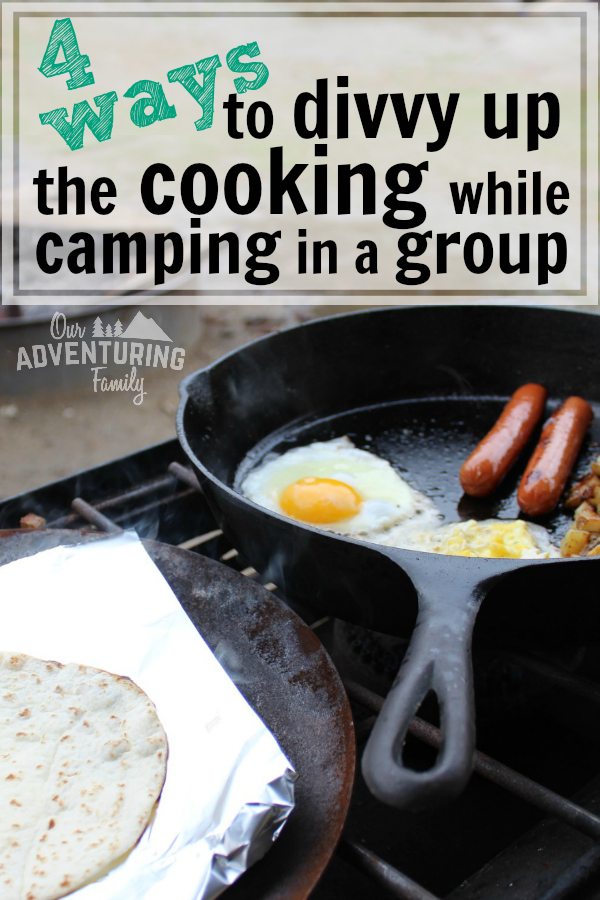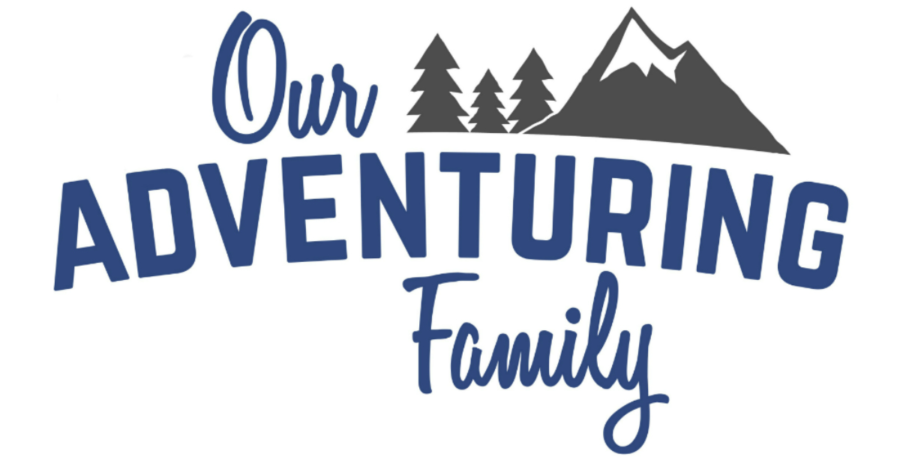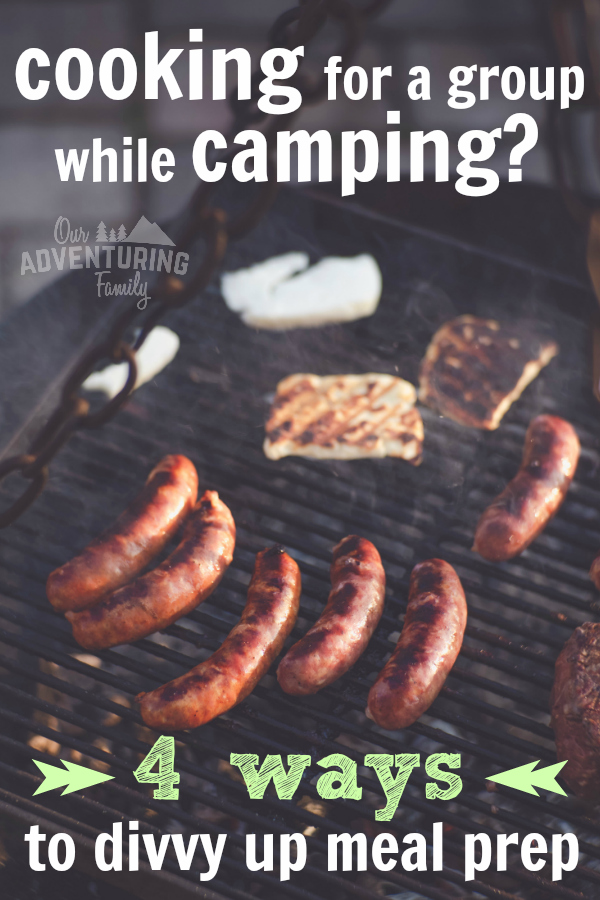This post may contain affiliate links. As an Amazon Associate I earn from qualifying purchases, but there is no additional cost for you. Please see my Disclosure page for more information.
We recently returned from a long road trip out west where we attended two family reunions. Family reunions for us always involve food and eating with family we haven’t seen for awhile. But sitting around the picnic table eating dinner while talking to various relations doesn’t just happen on its own.
Those meals have to be prepared, and we’ve seen it done several different ways. Each method has its pros and cons, and some are definitely better suited for different groups, depending on the dynamics of the group. Cooking for a large group can be a challenge, but it can be done!
If you have a family reunion or church campout that you need to prepare meals for, here’s some ideas to consider.
4 Ways to Manage Cooking for a Large Group Campout
1. Appoint an overseer
One person plans meals and makes assignments that everyone contributes to. Assignments can include include meal ingredients and cooking gear such as gas cookstoves, dutch ovens, and so on. Meal prep is shared by all.
One of Jeremy’s aunts puts together a menu before each reunion. She sends out a list of what every family should bring for each meal, as well as what equipment is needed. These reunions are attended by Jeremy’s parents, his dad’s brothers and sisters, and some of his siblings and cousins and their kids.
Example: For tortilla pizzas, every family should bring tortillas, pizza sauce, cheese, pepperoni, and any other desired toppings. They are cooked on gas cookstoves that are used throughout the reunion.
Pros:
- Everyone knows what the menu is and what is expected of them.
- Because the menu is known, if there are food allergies or other dietary restrictions, it is very easy to plan safe alternatives.
- Parents of small children have fewer food prep responsibilities, so they can keep an eye on their kiddos.
- Everyone eats together.
- There’s usually way more food than needed, so no one goes hungry, even if they forgot to bring an item.
- Leftover food can be used for other meals or at the final evening’s potluck.
Cons:
- While everyone should help with food prep, it may not work that way. Jeremy’s aunt and her hubby somehow end up doing more food prep than everyone else.
- Because there’s more food than needed, some gets wasted and must be thrown away.
2. Round Robin
Each family (or assigned group) is assigned a meal. They are responsible for bringing the food and equipment needed and doing all the prep for their meal.
At my family reunions, each sibling is responsible for a meal. This works well since there are nine kids in my family! Half are married, half aren’t, and three of us have children of our own. Single sibs have easier meals like breakfast and lunch, married sibs and our parents have dinners since they have a built-in helper. Depending on the length of the reunion, some of the siblings may work together for a meal, or some may end up with two meals.
Example: Jeremy and I made pulled pork sandwiches with slaw for our assigned dinner.
Pros:
- You only have to do food prep once or twice.
- Everyone gets a turn at meal prep, so no one person/couple/family is stuck doing the majority of the work.
- Those not making the meal can keep an eye on the kiddos of those who are, if that is needed.
- Everyone eats together.
- There’s less food wasted, and leftovers can be used at other meals.
Cons:
- Planning and prepping food for 20+ people can be a challenge, especially for the single sibs who are used to cooking for just themselves. For example, there have been a couple occasions when there might not have been quite enough food prepared. This is where leftovers come in handy, so no one has actually gone hungry.
- The menu is not distributed ahead of time, so it can be difficult to plan for alternatives if there are food allergies or other dietary restrictions. If this is an issue though, it wouldn’t be difficult to request a menu ahead of time. My siblings know to check with me about their planned meals, but I always have safe alternatives for my daughter and I just in case.
3. Mess Hall
Mess halls are ubiquitous at summer camps that kids attend, and if you rent one of those summer camps for a family reunion or church camp, you will have the opportunity to use both the kitchen and dining facilities present in the mess hall.
At our daughter’s church camp, they eat in a mess hall. One group of people does all the meal planning and all the meal prep while the girls are going about their activities throughout the day.
Pros:
- The menu is planned ahead of time.
- Because the menu is known, if there are food allergies or other dietary restrictions, it is very easy to plan safe alternatives.
- Leftover food can be used for other meals.
- Everyone gets to eat together, except the kitchen crew.
Cons:
- The kitchen crew won’t have a lot of time for other activities. This may not be such an issue at a church camp, but it probably would be an issue at a family reunion, assuming you like your family and want to spend time with them!
- The kitchen crew may or may not be experienced enough to handle the logistics of planning and preparing meals for a large group, including proper food allergy precautions.
- You must be at a camp that has kitchen and dining facilities large enough to feed your group.
4. Free For All
Everyone is responsible for their own meal planning and food prep. People can eat together or individually. Depending on the location of your outing, meals could also include restaurant meals.
We did this at a couple of very extended family reunions years ago. The core family group for those reunions were Jeremy’s great-grandparents and their children, grandchildren, great-grandchildren, etc. By the time the last couple of these reunions were held, the oldest generation had been gone for years and much of the next generation wasn’t able to attend for health reasons.
Those who did still attend were sometimes only distantly related and coordinating meals was not possible. Because relationships were so spread out, it worked for everyone to worry about their own meals, with a potluck dinner the last night. The kitchen facilities at the shared dining shelter sure got crowded, though.
Pros:
- No need to worry about food allergies or other restrictions being accommodated (or not).
- You prepare food you know your family will eat.
- Less food is wasted.
Cons:
- Because different meals are being prepared, they may not be ready at the same time, so people don’t get to eat together.
- Food envy will most likely occur. Anyone with kids has experienced this- the food is always better on someone else’s plate.
- Everyone has to bring all their cooking gear and space for it all can be an issue. It can be difficult to share gear if everyone needs it at the same time.
How do you divvy up meal prep responsibilities at your group campout?


